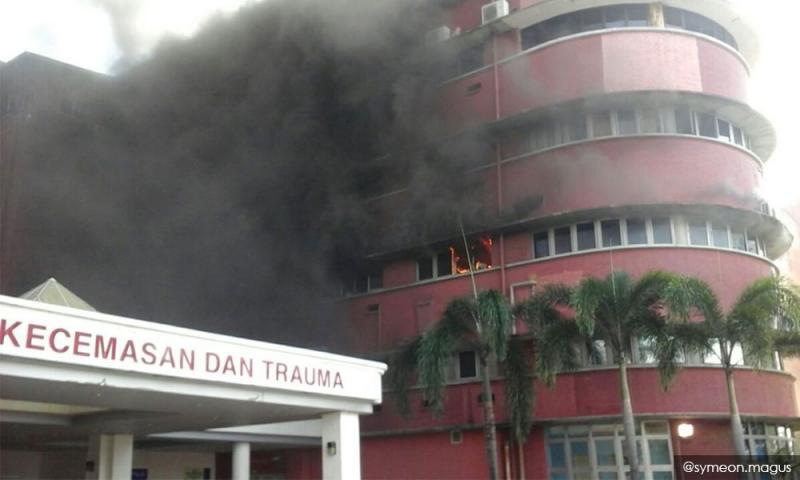LETTER | Lessons learnt from hospital fires
LETTER | In the last 10 years, there have been several fires reported in Malaysian hospitals. However, most of the causes of fires were not made known to the public.
The fire in Hospital Sultanah Aminah (HSA) Johor in 2016 that claimed six lives stands as the deadliest hospital fire in Malaysia’s history. The incidents should have drawn the attention of policymakers to prevent such catastrophes from happening again.
Healthcare institutions are vulnerable to disruption from fires that can endanger the lives of patients in the hospital.
In these incidents, hospital staff have primary responsibility for the safety of hospitalised patients, since most patients are neither fit to respond to such a disaster, nor do they know how to respond.
The situation becomes more difficult and challenging if the disaster occurs in critical care areas such as intensive care units (ICUs) and operating theatres, due to the complexities involved in moving acutely ill patients who are reliant on organ support and invasive monitoring.
Prior planning might help prevent a possible catastrophe. This includes a well-trained firefighting team with a fire officer, the availability of essential firefighting equipment, a well-documented and rehearsed disaster and evacuation plan, ongoing staff training, and strict implementation of statutory and regulatory requirements by the management.
Major hospitals should have a robust fire prevention and firefighting system that includes a fire-control room and fire officers who are responsible for ensuring strict compliance with regulatory aspects of fire safety round-the-clock.
Fires involving medical oxygen are not a new phenomenon and are more common in ICU wards and operating theatres where oxygen is routinely administered.
Oxygen gives no warning. As a colourless and odourless gas, and without any obvious physiological effect on humans, oxygen and oxygen-enriched atmospheres cannot be detected by normal human senses.
Presently, gas producers and public health authorities were slow to recognise and advise hospitals on the potential dangers.
Oxygen is essential to life and makes up about 21 percent of the gases in the air we breathe. Pure oxygen reacts with common materials such as oil and grease to cause fires and even explosions.
A leaking valve or hose, and openings at interfaces of masks and tubes, when in a confined space or where air circulation is low, can quickly increase the oxygen concentration to a dangerous level.
Even a small increase in the oxygen level in the air to 24 percent can create a fire hazard. In an oxygen-enriched environment, materials become easier to ignite and fires will burn hotter and more fiercely than in normal air.
Oxygen supplied to patients is not hermetically sealed, thus there is a continual stream of oxygen from the respiration oxygen going into the area in which the patient is being treated.
If the air condition exchange rate is low, it is likely that the background oxygen concentration in the area will rise well above the normal ambient concentration of around 21 percent.
Oxygen-rich environments in ICUs can also result from any number of emission sources, including leaking valves, pipelines, and hoses.
The industrial gas producer also needs to actively support hospitals in the adoption of more rigorous risk management approaches, building on lessons learned from oxygen safety to prevent fires and explosive atmospheres.
Nowadays, globally it is considered good practice for hospitals to identify and manage their safety and health risks.
It is generally recommended that risk management in hospitals is conducted through the implementation of a safety and health management system.
Good practice for ensuring the system is effective over time requires a minimum that the safety and health management systems be driven by top management so that hospital administrators feel accountable and empowered to manage risk.
In this role, the senior hospital management must understand that elevated oxygen concentrations pose a significant fire risk and thus a risk to patients and staff.
They should ensure that the safety and health management system has a comprehensive management plan to prevent enriched oxygen fires.
The views expressed here are those of the author/contributor and do not necessarily represent the views of Malaysiakini.
RM12.50 / month
- Unlimited access to award-winning journalism
- Comment and share your opinions on all our articles
- Gift interesting stories to your friends
- Tax deductable
